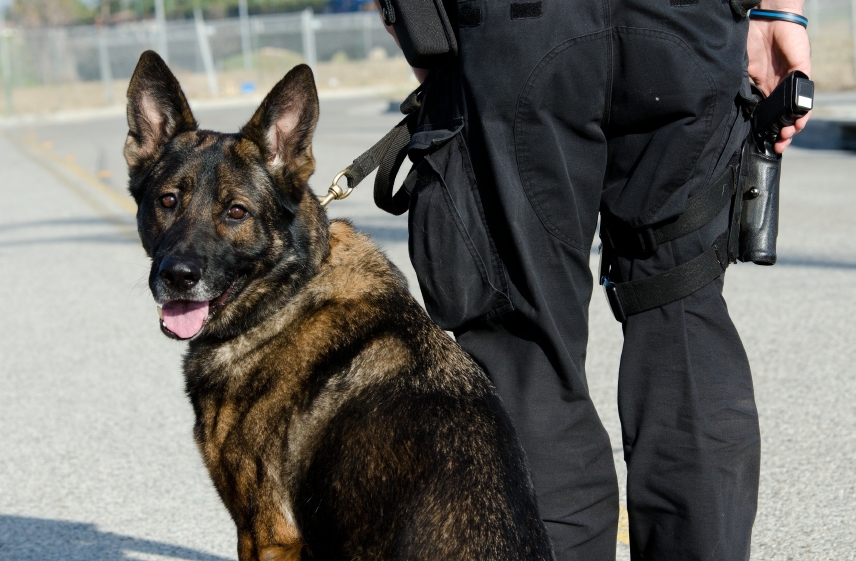A Short History of Police Dog Training

December 22, 2010 – Stephany McFadzean
Before police dog training was an idea, canines were drafted into law enforcement work as guard and attack K-9's. Preferred animals were strong, sturdy, ferocious, even vicious. When formal police dog training was first proposed, many questioned the wisdom of such an expensive venture.
Large Bulldog and Mastiff-type's were guard and attack dogs in the armies of the Romans, Egyptians, Persians, Greeks, and Britons. During the Middle Ages, Bloodhounds hunted down outlaws. A Newfoundland traveled with Lewis and Clark on their expedition across America.
During the American Revolutionary War and Civil War, canines traveled with their owners as mascots and sentries. World War I soldiers used dogs as sentries and messengers. Larger animals hauled ammunition. Red Cross K-9's located wounded soldiers.
World War II dogs did all the above and more. They worked as scouts, joining soldiers on patrol, alerting them to enemy soldiers nearby. Japanese canines guarded warehouses. German dogs guarded prison camps. In America, patriots donated their pets for military service.
In 1859 Belgium officers first used dogs on street patrols, an example soon followed by the Germans, French, Austrians, and Hungarians. There were no formal training programs. Pups were selected to be fearless, aggressive, intimidating. They protected their handlers, guarded evidence, apprehended criminals. By 1910 Germany had dogs working in 600 cities.
The United Kingdom followed the trend. Constables were authorized to take their own K-9s on patrol in 1914. A few years earlier in 1908, the Northern Eastern Railway was deploying Airedales as guard dogs to prevent theft.
In the United States, local police departments were slow to recognize the benefits. The 1970's saw the introduction of dogs. Today they work in every city, and many rural locales. Often they're protected with ballistic vests. Laws make it a felony to injure or kill a law enforcement K-9. More than 300 Search and Rescue animals aided the rescue efforts after the September 11 terrorist attack on the World Trade Center.
Today police dogs guard their handlers. They chase down fleeing criminals. Popular breeds in service are German Shepherds and Belgium Malinois. Bloodhounds and Beagles, with their outstanding sense of smell, make excellent search and rescue, also detection dogs sniffing out narcotics and explosives.
Europe is the breeder and trainer of choice. A two year program of obedience, agility, and endurance training narrows the field to the best, who then proceed to specialty instruction. To make the cut, a dog must be obedient, trustworthy, intelligent, forceful and strong.
Police K-9's are well-trained and socialized, not vicious. They live with their handlers family. They chase and hold onto a person when commanded to do so. It's a well-rehearsed game that brings a reward. Police dog training sessions scheduled twice a month keep their skills sharp.
Good police dog training [https://www.toppolicedogtraining.com/police-dog-training-equipment-and-how-to-use-it/] can help officers to perform many specialized duties with more safety. Police dog training [https://www.toppolicedogtraining.com/police-dog-training-the-natural-pack-order-dogs-instinctively-craves/] provides for search and rescue operations.
Article Source: https://EzineArticles.com/?expert=Stephany_McFadzean






